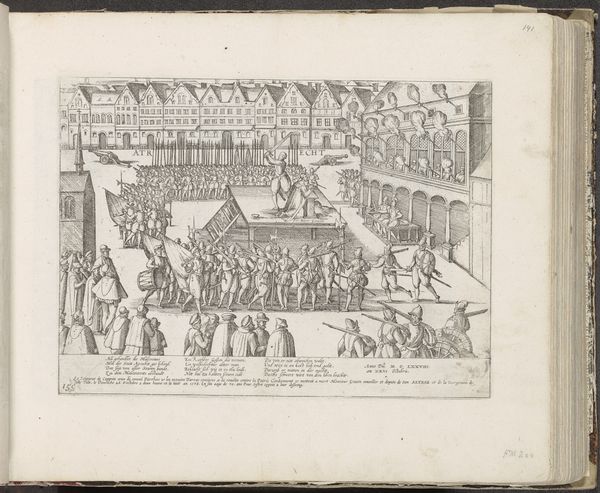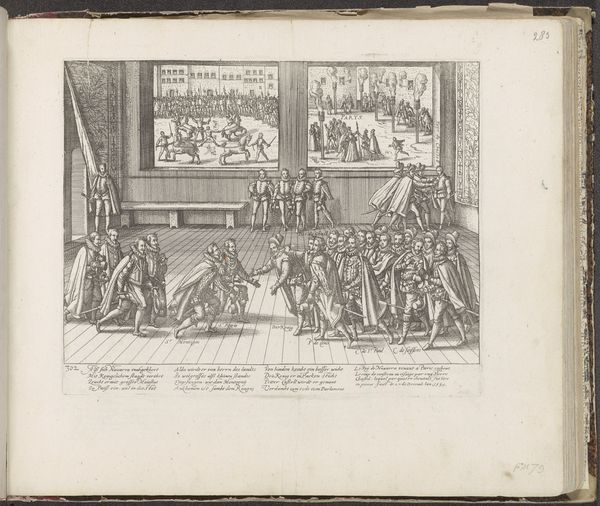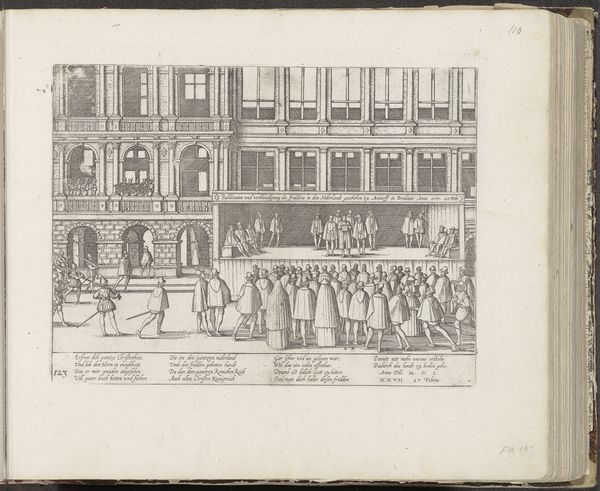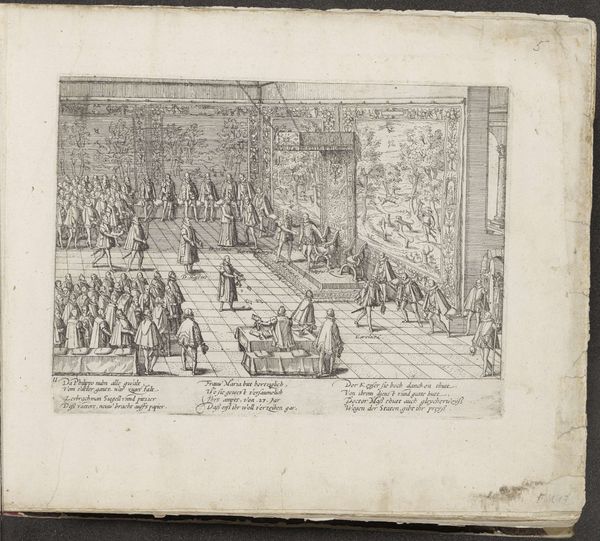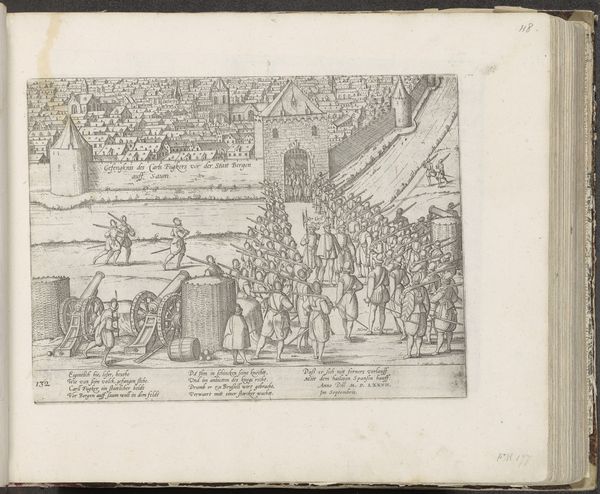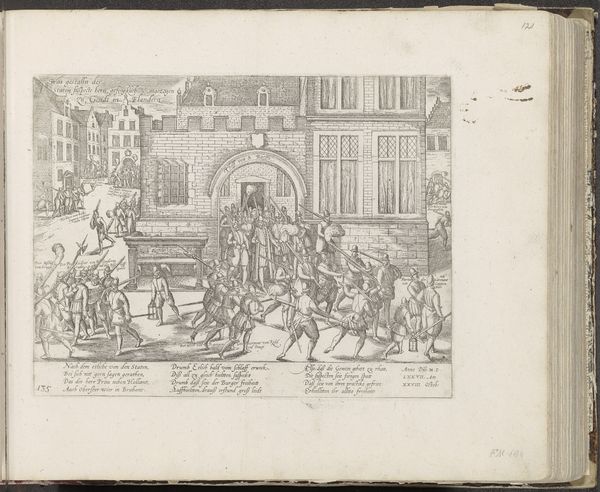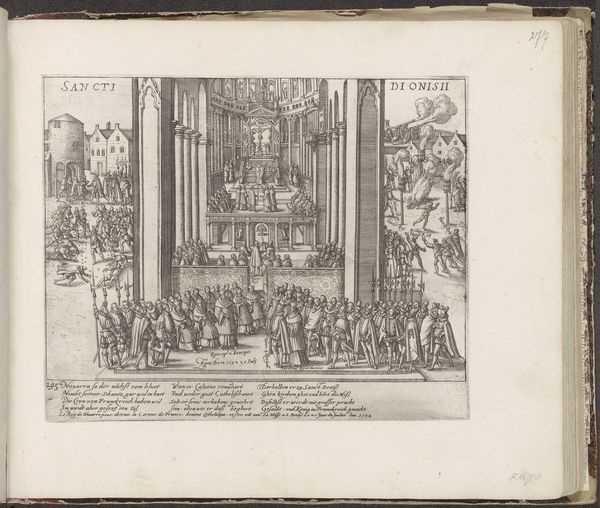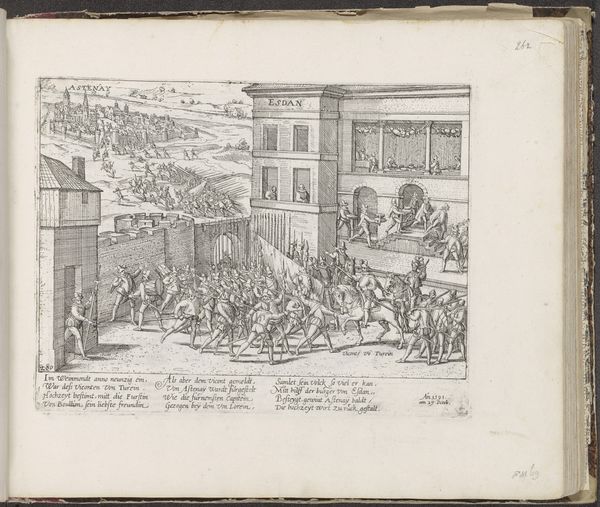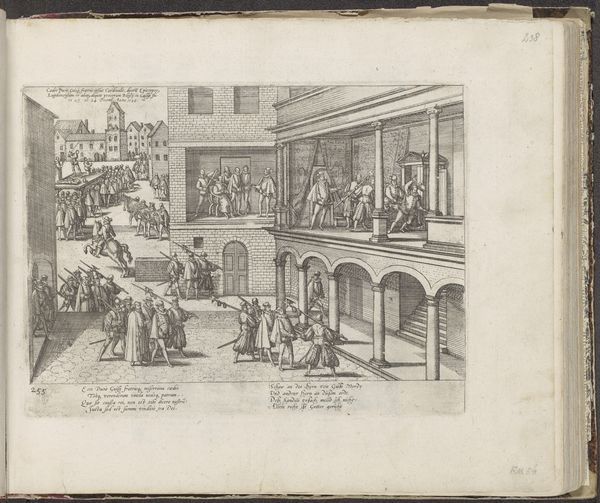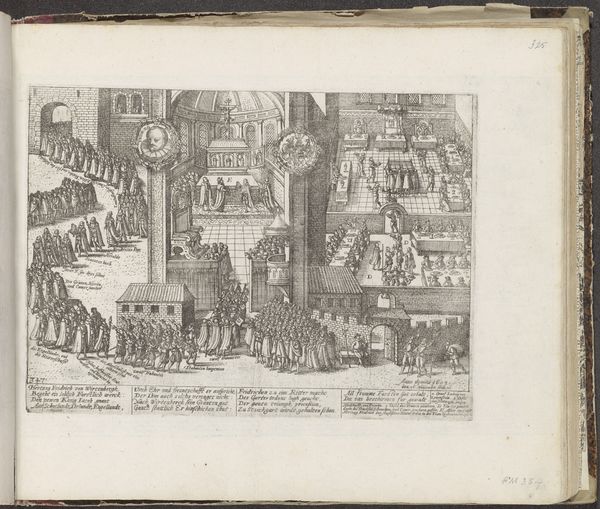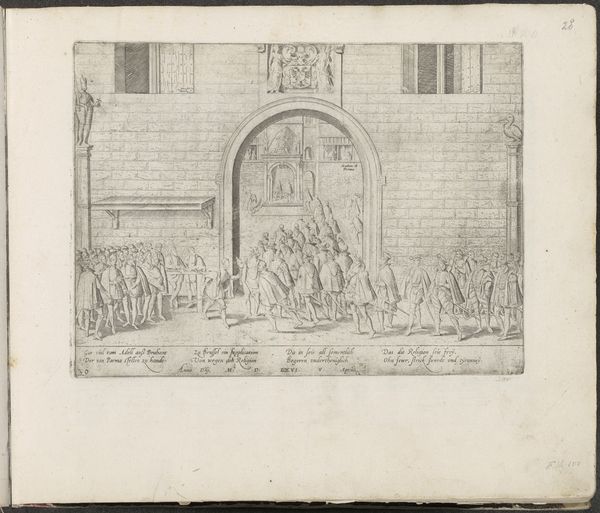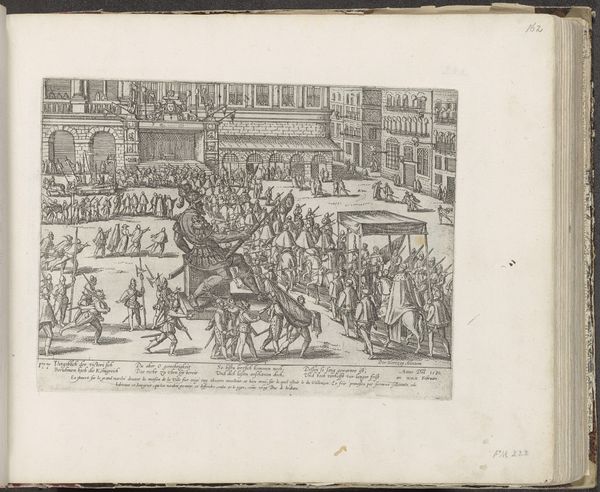
Matthias legt te Brussel de eed als landvoogd af, 1578 c. 1581 - 1585
0:00
0:00
franshogenberg
Rijksmuseum
print, engraving
#
aged paper
#
toned paper
#
medieval
#
narrative-art
# print
#
pen sketch
#
sketch book
#
personal sketchbook
#
pen-ink sketch
#
pen work
#
sketchbook drawing
#
cityscape
#
history-painting
#
storyboard and sketchbook work
#
sketchbook art
#
engraving
Dimensions: height 210 mm, width 284 mm
Copyright: Rijks Museum: Open Domain
In this engraving by Frans Hogenberg, made in 1578, we witness Matthias taking the oath as governor in Brussels. Note the flags and banners held high; these are not mere decorations but potent symbols of power, allegiance, and identity. The act of bearing flags has ancient roots, echoing through Roman military standards and medieval heraldry. These symbols serve as rallying points, imbuing followers with a sense of collective purpose and belonging. Observe how the central figure of Matthias is framed by these banners, suggesting his symbolic alignment with the values and aspirations they represent. Consider how flags have evolved—from simple emblems of kinship to complex representations of national and political ideologies. Their continued use reflects a deep-seated human need for visual symbols that can encapsulate shared beliefs and aspirations. These emblems evoke a complex interplay of loyalty, authority, and communal identity, engaging viewers on a profound, subconscious level. The cyclical progression of this symbol resurfaces, evolving and taking on new meanings in different historical contexts.
Comments
No comments
Be the first to comment and join the conversation on the ultimate creative platform.
